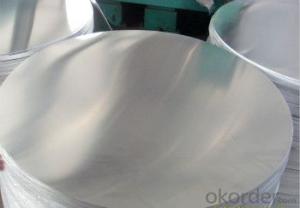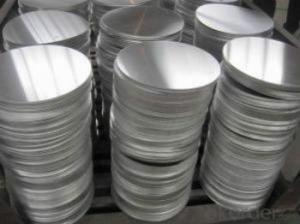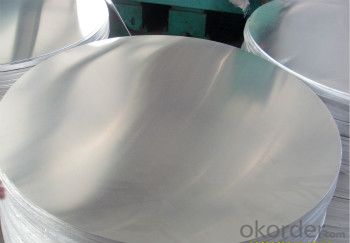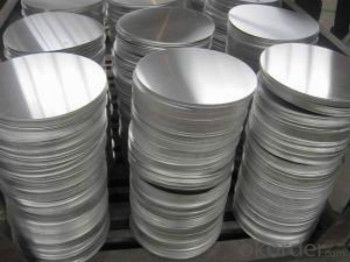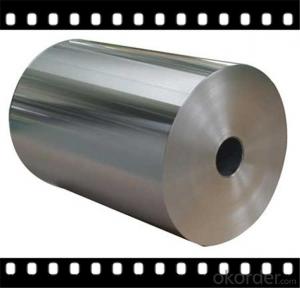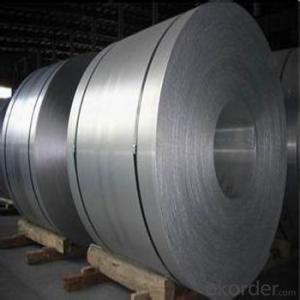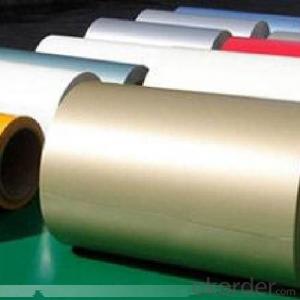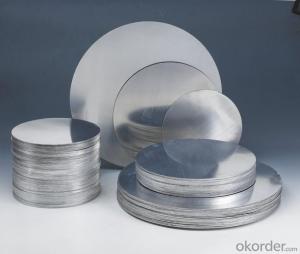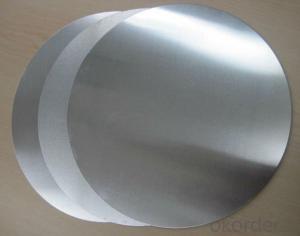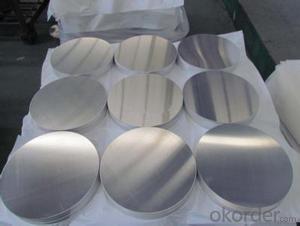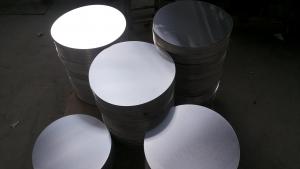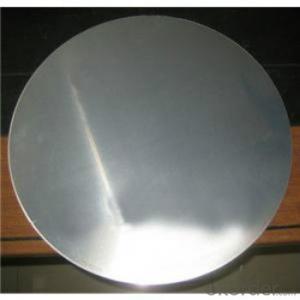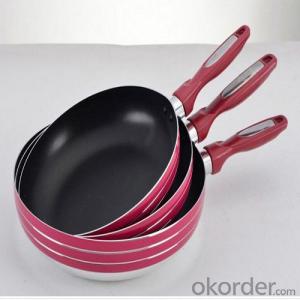Rolled Aluminum Coil for Spinning Aluminum Circles in Pots Manufacture
- Loading Port:
- Shanghai
- Payment Terms:
- TT OR LC
- Min Order Qty:
- 2 m.t.
- Supply Capability:
- 2000 m.t./month
OKorder Service Pledge
OKorder Financial Service
You Might Also Like
Specification
1. Structure of CC Aluminium in Coil Form for making Aluminium Circle Description
CC Aluminium in Coil Form for making Aluminium Circle is one semi-finished aluminium material. This coil can be rolled down to aluminium coil,sheet,circle ect. The alloy AA1050 is widly used in building, industry ect. Its weight is much lower than steel. So many customers choosed aluminium material instead of steel.
2. Feature of CC Aluminium in Coil Form for making Aluminium Circle
Surfact Quality :
Be free from Oil Stain, Dent, Inclusion, Scratches, Stain, Oxide Dicoloration, Breaks, Corrosion, Roll Marks, Dirt Streaks and other defect which will interfere with use,
Mechenical Property:
Chemical Composite and Mechanical Property
3. Image of CC Aluminium in Coil Form for making Aluminium Circle
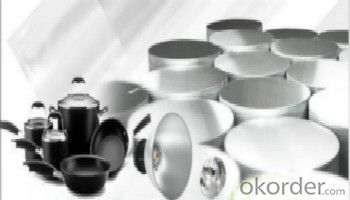
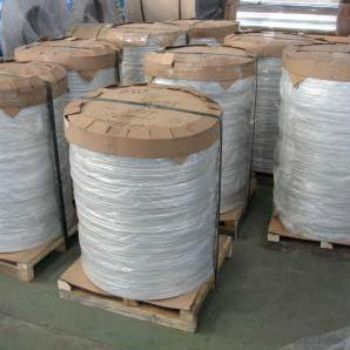
4. Specification of CC Aluminium in Coil Form for making Aluminium Circle
Aluminum Coil/Sheet | |
Main Specification | |
Alloy | AA1xxx (AA1050, AA1060, AA1070, AA1100 etc.) |
AA3xxx (AA3003, AA3004, AA3005, AA3105 etc.) | |
AA5xxx, AA6XXX (AA5052,AA5083, AA5754, AA6061, AA6062 etc.) | |
AA8xxx(AA8011, AA8006 etc.) | |
Temper | H14,H16, H18, H22, H24, H26, H32,O/F, T4, T6, T651 |
Thickmess | 0.01mm-100mm |
Width | 30mm-1700mm |
Standard | GB/T 3880-2006/ASTM |
Special specification is available on customer's requirement | |
5. FAQ
1) What is the delivery time?
Depends on actual order, around 20 to 35 days
2) What is the QC system:
We have QC staff of 20 persons and advanced equipment, each production is with MTC traced from Aluminum ingot lot.
3) What market do you mainly sell to?
Australia, America, Asia, Middle East, Western Europe, Africa etc
4)What about payment term?
30% T/T in advance, balance against B/L COPY.
- Q: How much of a difference does it make? I recently bought a 700 SPS tactical in 308. It has the Houge pillar bedding stock. I love the tacky feeling rubber outside, but noticed that the fore end of the stock flexes a bit (enough to touch the free floating barrel.) I was wondering if the aluminum bedding block version of the same stock (or any other aluminum bedding stock) will be better? I know they cost more, and the experts claim they're great, but will an amateur shooter notice the difference? I like to target shoot, typically around 200 yards. BTW, I was also considering the Bell and Carlson medalist.
- Vote for the Aluminum yet somewhat might like a silver lined one bless by using a Catholic priest that emits holy water. That way in case they are additionally a vampire you nailed them.
- Q: This question asks for a comparison between aluminum coil and aluminum foil, highlighting their differences.
- <p>Aluminum coil and aluminum foil are both made from aluminum but differ in form and usage. Aluminum coil is a long, continuous roll of aluminum that is typically thicker and more rigid than foil. It is used in various applications such as construction, manufacturing, and packaging due to its strength and durability. Aluminum foil, on the other hand, is a thin, flexible sheet of aluminum that is often used for food packaging, cooking, and insulation. It is lighter and more delicate than coil, making it unsuitable for heavy-duty applications. The primary distinction lies in their thickness, strength, and versatility across different industries.</p>
- Q: My front door is scraping the aluminum frame door jam thing on the bottom. Also underneith the door itself it seems like there is a huge aluminum device covering the whole bottom of it and an aluminum weather stipper built into that. Is my only option to have the door pulled off. Or could I maybe grind of file down the aluminum on the bottom?
- You okorder /
- Q: How are aluminum coils used in the production of aircraft components?
- Aluminum coils play a crucial role in the production of aircraft components. These coils are typically made from high-quality aluminum alloys that offer a combination of strength, durability, and lightness, making them ideal for aircraft manufacturing. One primary use of aluminum coils in aircraft production is in the fabrication of sheet metal parts. These coils are processed through various techniques such as rolling, stretching, and bending to form flat sheets of aluminum. These sheets are then cut and shaped to create various aircraft components, including wings, fuselage panels, and tail surfaces. The lightweight nature of aluminum makes it a preferred material for aircraft construction as it helps reduce the overall weight of the aircraft, enhancing fuel efficiency and performance. By using aluminum coils, manufacturers can easily produce thin and lightweight parts, which contribute to the aircraft's overall weight reduction. Moreover, aluminum coils are also used in the production of structural components such as frames and beams. These coils are formed into extrusions, which are then cut and joined to create structural elements of the aircraft. Aluminum's high strength-to-weight ratio makes it an excellent choice for these components, as it provides the required strength while keeping the weight of the aircraft low. In addition to its structural applications, aluminum coils are also used in the production of various aircraft systems. For instance, these coils are utilized in the construction of heat exchangers, air conditioning units, and fuel tanks. The excellent thermal conductivity of aluminum allows for efficient heat transfer, which is crucial for maintaining optimal operating conditions within the aircraft. Overall, aluminum coils are extensively used in the production of aircraft components due to their lightweight, high strength, and excellent thermal properties. Their versatility and ability to be processed into various shapes and sizes make them a preferred material for manufacturing crucial aircraft parts, ensuring the safety, performance, and efficiency of modern aircraft.
- Q: Can aluminum coils be used for electromagnetic shielding?
- Indeed, aluminum coils possess the capability to be employed in electromagnetic shielding. Due to its high conductivity, aluminum performs effectively in obstructing or redirecting electromagnetic fields. The utilization of aluminum coils in electromagnetic shielding aids in hindering the transmission of electromagnetic radiation by means of reflection or absorption. This shielding characteristic proves to be exceedingly advantageous in scenarios where the reduction of electromagnetic interference is imperative, for instance, in electronic devices, communication systems, or delicate equipment. Furthermore, aluminum coils are characterized by their lightweight nature and commendable mechanical properties, rendering them a pragmatic selection for electromagnetic shielding.
- Q: Can aluminum coils be used for radiation shielding?
- Yes, aluminum coils can be used for radiation shielding. Aluminum is often used as a shielding material due to its high atomic number and excellent attenuation properties, which effectively block and absorb radiation. It is commonly used in various industries, including medical, nuclear, and aerospace, for shielding against different types of radiation such as X-rays and gamma rays.
- Q: How are aluminum coils coated for corrosion resistance?
- Aluminum coils are coated for corrosion resistance through a process known as coil coating. This involves applying a protective coating onto the surface of the aluminum coils to prevent oxidation and corrosion. The coating is typically a combination of primer and topcoat that is applied using various methods such as coil coating lines or spray applications. The coating acts as a barrier, protecting the aluminum from environmental factors such as moisture, chemicals, and UV radiation, thereby enhancing its durability and extending its lifespan.
- Q: What benefits can be gained from utilizing aluminum coil insulation in various applications?
- <p>Aluminum coil insulation offers several advantages, including high thermal conductivity, which allows for efficient heat transfer. It is lightweight and corrosion-resistant, making it durable and suitable for various environments. The material is also known for its flexibility, which facilitates easy installation and adaptability to different shapes and sizes. Additionally, aluminum coil insulation has good electrical conductivity, which can be beneficial in applications requiring electromagnetic shielding. Its recyclability contributes to environmental sustainability, reducing waste and promoting green practices.</p>
- Q: What are the different widths available for aluminum coils?
- The different widths available for aluminum coils range from narrow widths of around 3 inches to wider widths of up to 60 inches or more, depending on the specific requirements and applications.
Send your message to us
Rolled Aluminum Coil for Spinning Aluminum Circles in Pots Manufacture
- Loading Port:
- Shanghai
- Payment Terms:
- TT OR LC
- Min Order Qty:
- 2 m.t.
- Supply Capability:
- 2000 m.t./month
OKorder Service Pledge
OKorder Financial Service
Similar products
Hot products
Hot Searches
Related keywords
